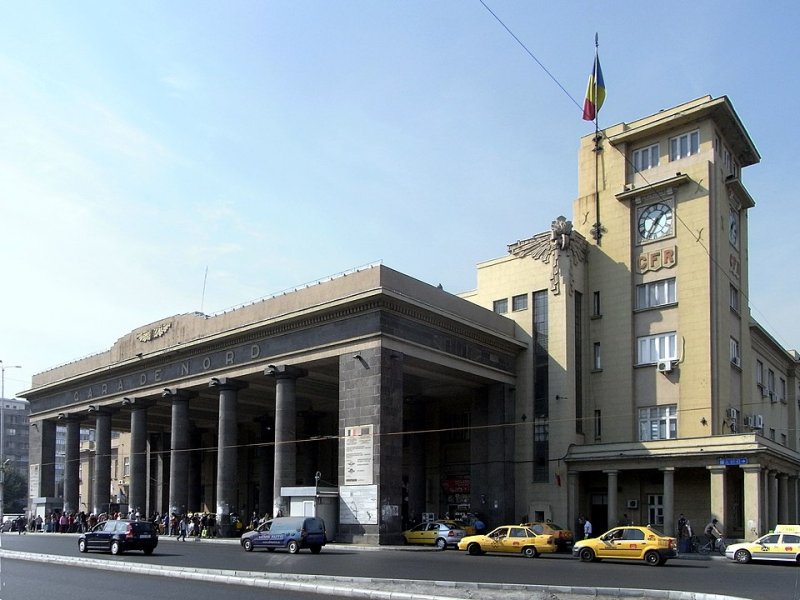For many, Gara de Nord is their first contact with Bucharest. And unfortunately, not the best one.
The main building, inaugurated in 1872, was meant to be a gateway worthy of a European capital. And for a while, it was. Today, it’s a mix of the old and the decayed—cracked walls, crumbling plaster, and an overall sense of improvisation that reminds you exactly where you are.
Modeled after Western European train stations, with high arches and columns, Gara de Nord was, in the late 19th and early 20th centuries, a strategic railway hub. Royal trains departed from here. Soldiers left for war. Merchants and emigrants passed through. During the interwar period, the station was lively, efficient, even elegant. It had a restaurant, watchmakers, and wooden-paneled waiting rooms. It wasn’t just infrastructure—it was an institution.
Today, Gara de Nord looks like a station the state has forgotten. Cheap ads, kiosks glued to walls, furniture from another century, and a constant smell of damp, fast food, and exhaust fumes. The platforms work, technically—but the atmosphere is tired. At every corner, you feel the absence of real oversight. Safety? Minimal. Cleanliness? Debatable. Aesthetic value? Nonexistent.
Over the years, there’s been endless talk of modernization, renovation, public-private partnerships. Promises, tenders, studies. Very little has materialized. A few platforms have been redone. Some electrical work has been done. But the essence is the same: a train station running on inertia.
And yet, Gara de Nord is alive. For all its flaws, it still moves tens of thousands of people every day. It’s a place with history, with stories, with weight. But it seems frozen in time, while the city around it moves forward—forgetting the front door it once took pride in.
Gara de Nord isn’t just a place on the map. It’s a mirror of a state that abandoned its infrastructure where it matters most: in the eyes of those arriving.
How to get there: Gara de Nord is easily accessible from anywhere in the city. You can take the metro to Gara de Nord station (lines M1 and M4), or trams 1, 35, and 44, as well as buses 123, 133, 178, and 282. The express bus 780 connects the station directly to Otopeni Airport. If you're coming by car, there are parking areas nearby—but traffic is almost always heavy, especially during peak hours.




